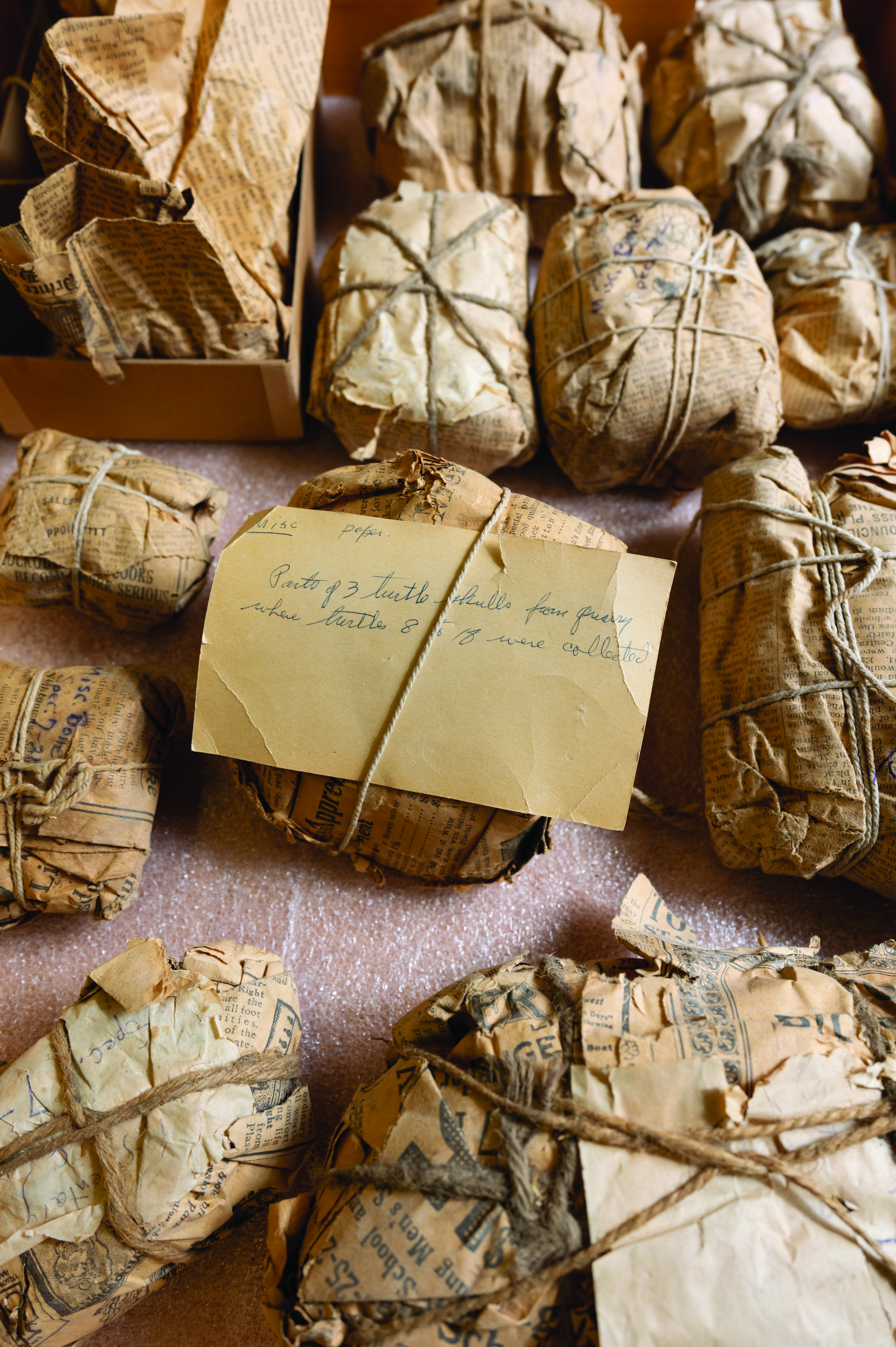Lost and found (again)
Michael Brown - 16 December 2022

A collection of fossils in the U of A Dino Lab, wrapped in newspaper more than 100 years old. Photo credit: Dawn Graves
Finding old specimens that have been collected but not processed is common in museum curation. And sometimes it becomes a double discovery: one about the specimen, and one about the original finders. A stash of rediscovered bones has cast light on the subtropical forests of the late Cretaceous — and on paleontology of the 1920s.
Wrapped in newspaper and tied with baler twine, the 20 or so pieces were pulled from a back shelf on the U of A’s South Campus. Handwriting on the specimens suggests the haul is from the 1920 and 1921 expeditions in what is now Dinosaur Provincial Park, led by the U of A’s first paleontologist, George Sternberg.
Clive Coy, chief technician in the Laboratory for Vertebrate Paleontology, is particularly interested in a piece labelled “three turtle skulls from quarry where numbers eight through 18 were collected.”
“Turtle skulls are extremely rare and — considering how old they are and preserved in just newspaper — they could be quite important,” he says. The skulls are most likely from the time of the Dinosaur Park Formation, which occurred somewhere between 72 and 76 million years ago. Coy says the specimens also hold value as historical artifacts, offering a glimpse into the U of A’s beginnings in paleontology in the 1920s.
Today, the university’s Laboratory for Vertebrate Paleontology is one of 30 registered museum collections on campus and has on the order of 65,000 specimens.